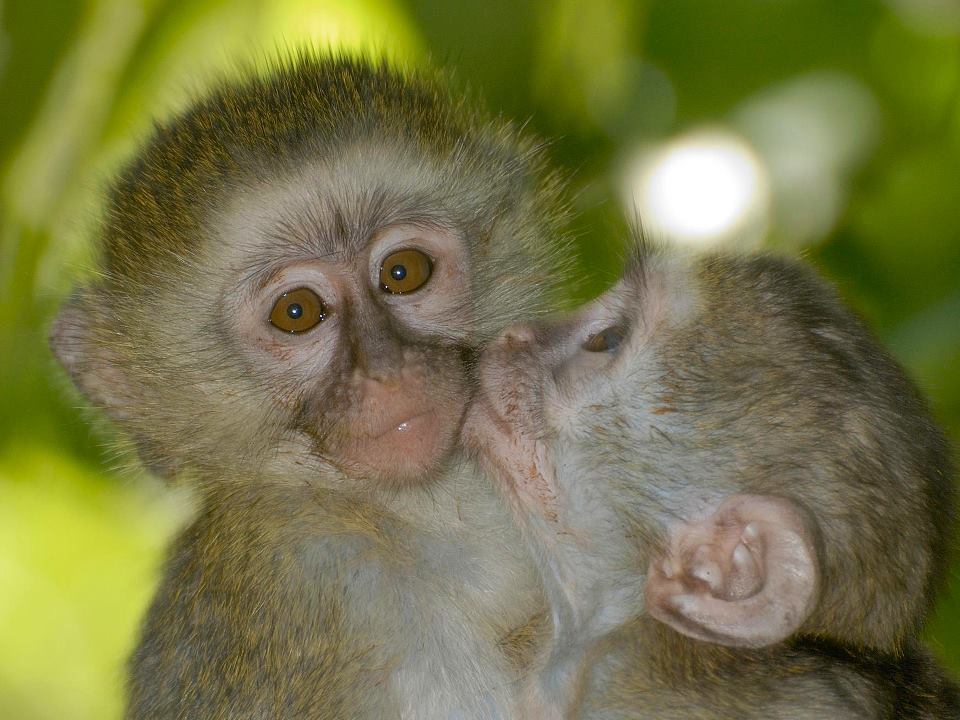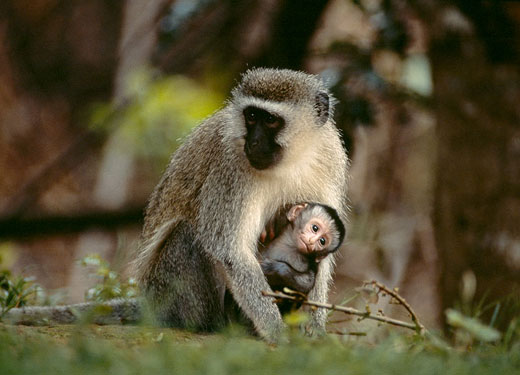the alcoholic vervet monkeys
biology 342 2012
By Sarah Resnick and Amanda Cernegie
ONTOGENY
learned or innate?
Alcoholism develops in the lifetime of Chlorocebus pygerythrus in a similar fashion that the disorder develops in humans. Children of alcoholic humans are more likely to develop the disorder themselves, due to genetics and environmental factors [2]. Similarly, the offspring of heavy-drinking vervets will tend to drink twice as much in their lifetimes as the offspring of moderate drinkers, and these offspring will drink twice as much as the offspring of alcohol-avoidant vervets. The consumption of alcohol in these monkeys, as in humans, is a heterogenous behavior: some are abstainers, some are light, and some are heavy, even problematic drinkers. These heavy drinkers that drink enough to the point to warrant pathology come in similar numbers that humans do: roughly 5% of the population; furthermore, this maladaptive behavior develops in heavy drinkers to the point of coma, liver failure, heart disease, and gastric damage [8].
Adolescents and Alcohol:
The course of alcoholism takes its developmental toll during adolescence in this species. Environmental stressors in early development play a role in increased consumption, which can cause more anxiety-like behaviors and greater aggression in young monkeys [4]. Juvenile monkeys also show greater consumption of alcohol at a time than do adults, regardless of “social” or “heavy” drinker classification [6], reminiscent of the college lifestyle in human samples. It has been suggested that this may be do to the faster-acting metabolisms of younger monkeys [1]. Social factors have a huge impact on this behavior during this pivotal developmental period, as exposure in social settings, and can even increase preference [9].
 life course and consequesces:
life course and consequesces:
Alcoholism, in vervets as in humans, tends to be chronic, and relatively stable throughout the lifespan. A socially-drinking young vervet will develop stably into a socially-drinking adult vervet, and give birth to socially-drinking offspring who will follow this course as well. The heavy drinkers will continue their maladaptive courses until any number of events halts its continuance: the breeding period (alcohol is not typically apart of the reproductive period, as fetal alcohol syndrome can develop in monkey newborns as well), comatose, and even death [8].